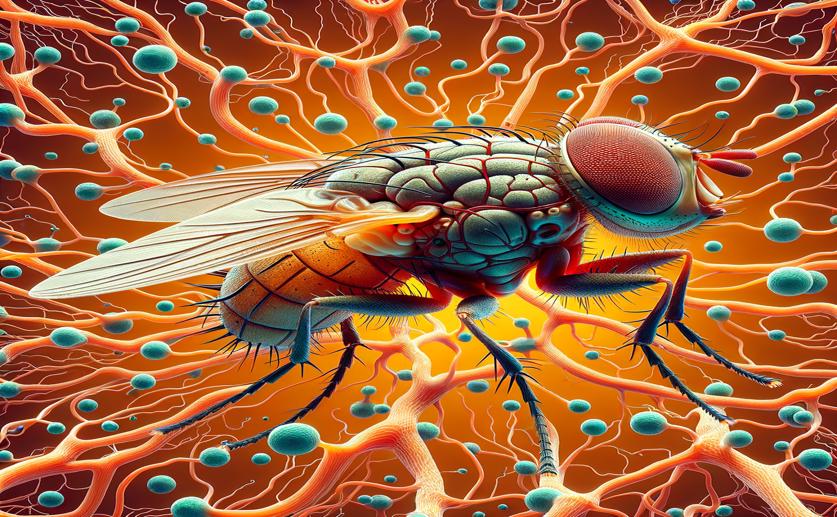
How Brain Connections Develop in Fruit Flies
Jim Crocker
8th June, 2024

Image Source: Natural Science News, 2024
Key Findings
- The study from the University of Utah examined the olfactory circuits of three closely related Drosophila species
- Neurons encoding food odors connect more frequently with Kenyon cells, leading to species-specific connectivity patterns
- These connectivity patterns enhance learning performance in associative tasks, reflecting the species' chemical ecology
GeneticsAnimal ScienceEvolution
References
Main Study
1) Evolution of connectivity architecture in the Drosophila mushroom body.
Published 7th June, 2024
https://doi.org/10.1038/s41467-024-48839-4
Related Studies
2) From Cell Types to an Integrated Understanding of Brain Evolution: The Case of the Cerebral Cortex.
3) Evolution of central neural circuits: state of the art and perspectives.
4) The secret lives of Drosophila flies.



 16th May, 2024 | Jim Crocker
16th May, 2024 | Jim Crocker